#Katsuo Matsuda
Text

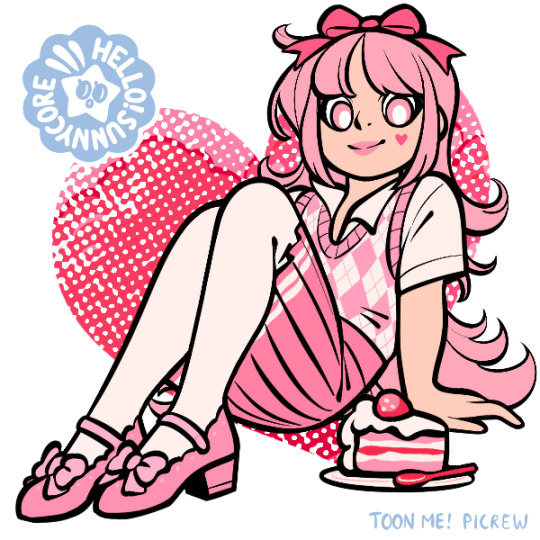




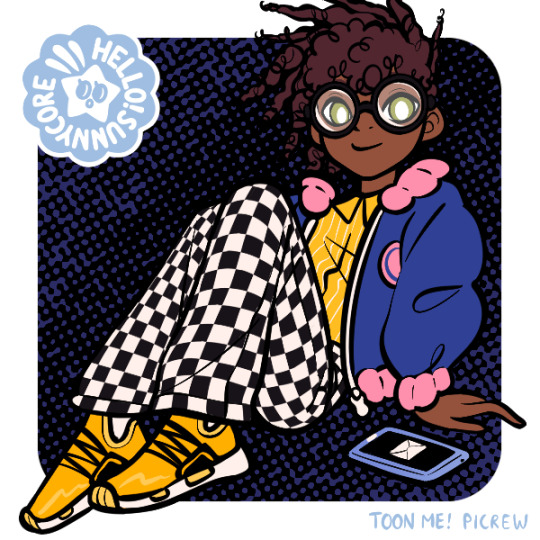
Dunno if Tumblr still thinks picrews are cringe or what (I wouldn't actually care either way if it did) but anyway I was reminded of the one I used to make my DR7 and how much fun it was. And also since I apparently draw slower than molasses when it comes to actually working on their sprites, I thought I'd post them all here.
In order:
Hitomi Yoshihara
Ava Tarnbull, Mio Hatanaka
Honoka and Ryuji Saeki
Ishida Amano, Katsuo Matsuda
Picrew link here:
https://picrew.me/ja/image_maker/1944831
#Hayley Speaks#My OCs#Hitomi Yoshihara#Ava Tarnbull#Mio Hatanaka#Honoka Saeki#Ryuji Saeki#Ishida Amano#Katsuo Matsuda#It sucks I can't include ALL the little details on them; especially on Ryuji#And Katsuo's jacket is supposed to be closer to the colors of the trans flag#But alas; the limitations of picrew~!#Maybe one day I'll actually finish drawing all of them out#I might end up redoing the sprites I have planned out#I'll figure it out~!
1 note
·
View note
Photo
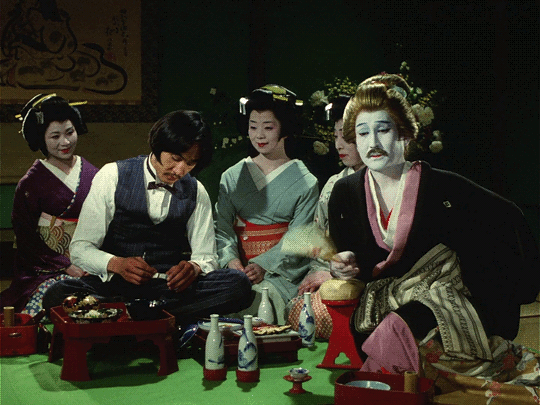
256 notes
·
View notes
Text
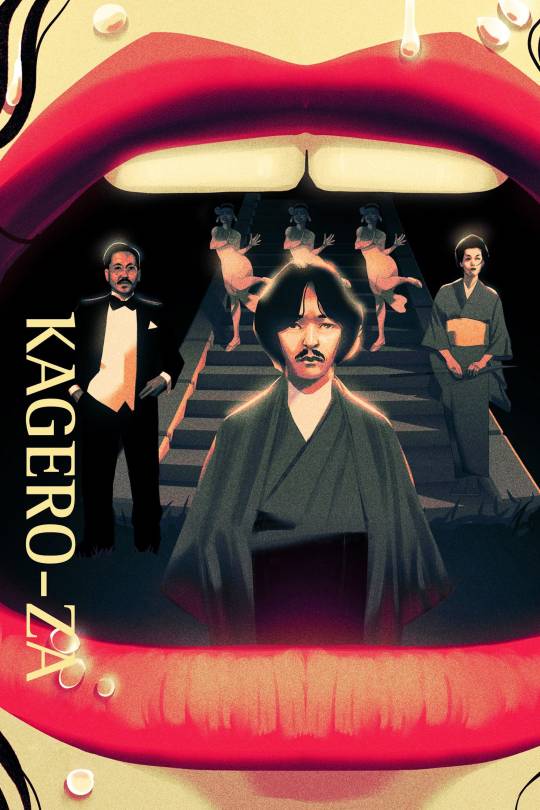
1 note
·
View note
Text

~BIO~
Name: Katsuo Matsuda
Age: 16
Talent: Ultimate Tennis Player Robotics Engineer
Bio: From an early age, Katsuo was naturally talented as a tennis player and his talent combined with a number of other less-pleasant factors influenced him into honing his skill to become the latest of Hope’s Peak’s tennis-related ultimates.
Despite his natural talent in the game, however, Katsuo’s interests lie in the world of robotics and mechanical creation. He’s quite skilled when it comes to creating machines, be it machines that can assist people in everyday life or the latest robot he’s built to fight in an underground robo-rink. Of which he frequents as often as he can in secret; his mother isn’t a fan of his desire to switch talents and prefers him to stick to tennis.
Katsuo hopes that he can hone and improve his preferred ultimate skill enough so that by the time he graduates, he has enough security and strength to stand up to his mother and tell him that this is what he wants to do with his life and no one’s going to stop him!
...But at the same time, that’s easier said than done. He’s a pretty soft-spoken dude who hates confrontation.
Additional Info: He’s a trans boy, who came out at an early age. This was part of the reason his mother pushed him so much to stick to tennis; she was ‘supportive’ of his transition at a surface level, but it was obvious that she was hoping to steer Katsuo away from any thoughts he was having about being a boy with a more ‘’’’feminine’’’ talent. It did not.
Although despite this and his disinterest in pursuing tennis as his ultimate talent, he still a lot of respect for the sport and for the other tennis-themed ultimate at the school; Ryoma Hoshi. Regardless of his past, Katsuo does think highly of Ryoma and really hopes the two can be friends.
Voice claim: Bex Taylor-Klaus (Pidge from V*ltron. Because of reasons...)
AUs:
Gravity Falls: In this setting, his information is relatively the same. Only major difference is that he happens to be from a DR-parody game Soos owns called Super Mega Hopeless Murder High School Of Hopelessness.
He’d be a fan of Dipper, Ford and probably McGucket if he ever met them, for a number of reasons. But hey, video games come to life all the time in Gravity Falls, so who knows what’ll happen?
#Mun Speaks#Katsuocore#Katsuo Headcanons#Transphobia //#(Only a mention of it in regards to his dad but yeah)#(Anyway my BOYYYY)#(He was one of the first of my seven I was real focused on developing)#(I cherish him so much)
1 note
·
View note
Text

Katsuo Matsuda, the ultimate linguist! To learn more about him check out @danganronpa.fracturedhope on Instagram!!
#Katsuo Matsuda#Matsuda Katsuo#danganronpa#fanganronpa#danganronpa oc#oc#fangan#fanganronpa oc#original character#danganronpa fractured hope#drfh
5 notes
·
View notes
Photo



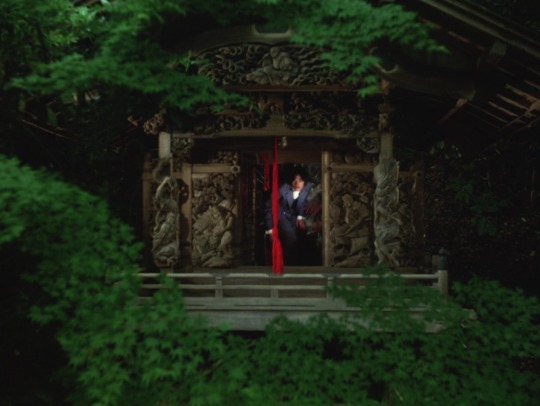
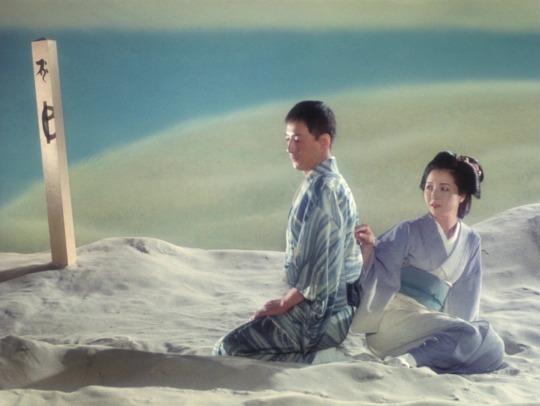

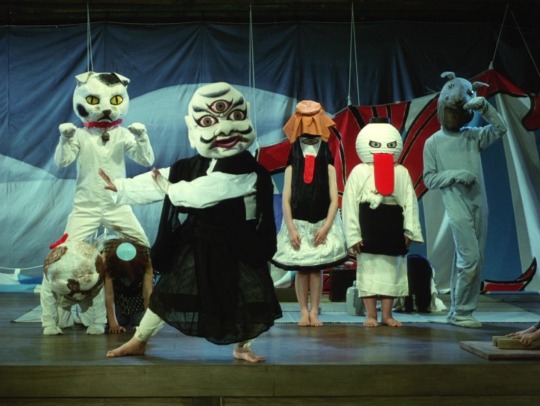


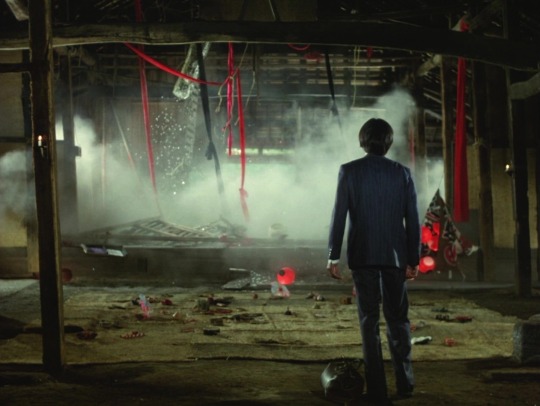
Kagerō-za (1981, Seijun Suzuki)
陽炎座 (鈴木清順)
Also known as: Heat-Haze Theatre / Heat Shimmer Theater
4/17/20
#80s#Kagero-za#Seijun Suzuki#Taisho Trilogy#Japanese#Yusaku Matsuda#Michiyo Yasuda#Mariko Kaga#Katsuo Nakamura#Yoshio Harada#experimental#surreal#dreams#ghosts#jazz age#Taisho#theater#playwrights#double suicide#afterlife#identity#temple#absurd#kabuki#ero guro
12 notes
·
View notes
Photo

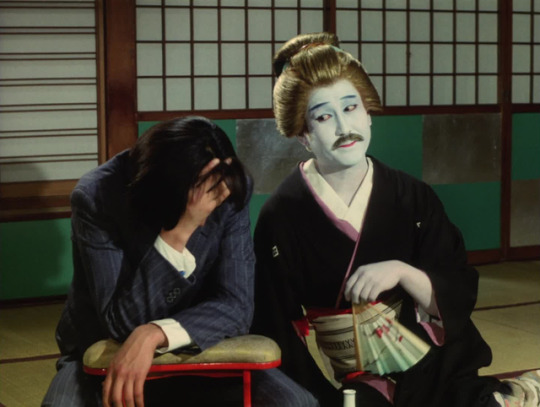
Kagerô-za | Seijun Suzuki | 1981
Yûsaku Matsuda, Katsuo Nakamura
#Yûsaku Matsuda#Katsuo Nakamura#Seijun Suzuki#Kagerô-za#Kagero Za#1981#Heat Haze Theatre#Heat Shimmer Theater
80 notes
·
View notes
Text
The 25th Detective Conan Film Releases Full Trailer Featuring Newly-arranged Main Theme
Following the teaser posted early this month, the official website for the Detective Conan anime film series has posted a 60-second new trailer for its 25th feature film Detective Conan: The Bride of Halloween to be released in Japan on April 15, 2022.
The clip features the Conan anime franchise's iconic theme newly arranged by Yugo Kanno (JoJo's Bizarre Adventure series, PSYCHO-PASS), who is in charge of the film's soundtrack music.
"The pressure of being in charge of a nationally popular series that is loved by so many people kept me up at night, but I was able to complete the soundtrack with a lot of advice from the staff who have worked on the Detective Conan series many times," said Kanno.
"The tune that was particularly difficult to arrange was the main theme. In order not to disappoint everyone's expectations, I arranged it with the utmost respect for the original. After receiving advice from Katsuo Ohno-sensei (the theme's original composer), I made revisions and received the OK, which made me feel happy, as if I had received the official endorsement. I learned once again the power of the main theme composed by Ohno-sensei, which instantly brings you into the world of Conan the moment the tune is played in the movie. Please look forward to the movie version of 'Detective Conan: Bride of Halloween,' including its music!"
youtube
#劇場版名探偵コナン #ハロウィンの花嫁
|◤ 新予告映像解禁!!! ◢|
大迫力映像と菅野祐悟さんのアレンジによるメインテーマも要注目です!!!
菅野祐悟さんからコメントも到着????https://t.co/rY4JsCNg8a
2022年4月15日(金)公開 pic.twitter.com/Jt1Bf7ISOK
— 劇場版名探偵コナン【公式】 (@conan_movie) December 23, 2021
Teaser visual:
Story introduction:
Shibuya, Tokyo, is bustling with the Halloween season. A wedding is being held at Shibuya Hikarie, where Detective Miwako Sato of the Metropolitan Police Department is dressed in a wedding dress. While Conan and the other invited guests are watching, an assailant suddenly bursts in, and Detective Wataru Takagi, who was trying to protect Sato, is injured. Takagi survived and the situation was settled, but in Sato's eyes, the image of the grim reaper that she had seen when Detective Matsuda, the man she had been in love with, had been killed in a series of bombings three years ago, overlapped with Takagi's.
At the same time, the perpetrator of the bombings escapes from prison. Is this really a coincidence? Rei Furuya (Toru Amuro), a member of the public safety police, is hunting down the man who killed his classmate, Detective Matsuda, but a mysterious person in disguise suddenly appears and puts a collar bomb on him.
Conan visits the underground shelter where Amuro is hiding out to disarm the collar bomb, and hears about an incident three years ago when he and his now deceased classmates from the police academy encountered an unidentified virtual bomber named "Plamya" in Shibuya. As Conan and his team investigate, a disturbing shadow begins to loom over them.
Source: "Detective Conan" film series official website / Twitter
©2022 Gosho Aoyama/Detective Conan Production Committee
By: Mikikazu Komatsu
2 notes
·
View notes
Text
Taishō Trilogy of Seijun Suzuki

As a salaried director at Nikkatsu, Japanese filmmaker Seijun Suzuki has been making crime movies for decades. He has directed around 40 movies from 1956 to 1967, of which Tokyo Drifter and Born to Kill are considered the most acclaimed. In a later attempt to reignite his career after splitting paths with Nikkatsu and veer off to the new ways of expression and stylistics, Suzuki started working on surrealistic feature film Zigeunerweisen becoming the first part of unformal Taisho Trilogy: Zigeunerweisen, Kagero-za, Yumeji. The three films are not linked with any similarities in the plot but set in the same period of emperor Taisho ruling the nation. It was the time of 1920-1930s. All films resemble hectic dreams and bear unmistakable visual similarities. The films have been meant to create the new stylistics for Suzuki developing his old strife to produce the shots of supreme beauty to strike not less than Godard’s shots used to do. Taisho Trilogy is an example of films lacking the coherence, yet remaining unforgettable with their quixotic and wild visuality.
Zigeunerweisen (ツィゴイネルワイゼン) - 1981

From my point of view, the best way to get a glimpse in the Taisho Trilogy is to watch the last part of it Yumeji. The last film encapsulates all the achievements of the trilogy. Comparing with Yumeji, Zigeunerweisen is almost impossible to comprehend. The film employs riddles in abundance, and the hints given can unlikely help to solve quite a few of them. In a surrealistic way, Suzuki’s tale shows the relations between two former co-workers Nakasago (portrayed by Yoshio Harada) and Aochi (Toshiya Fujita) who developed affairs with the wives of each other (at some point, Nakasago even suggests to exchange the wives). The story is ambiguous and not very coherent as Suzuki doesn’t bother himself to show the things in any sort of logical way or order.
In fact, the film is set in several dimensions, and it never becomes clear whether Nakasago has died or not, and whether Koine and Sono (both played by gorgeous Naoko Otani) are the same women or two different. We don’t really get a clear idea of why Nakasago killed a woman and if he actually killed her or not. The behaviour of a spooky girl also remains mysterious and unclear. Is she sort of ghost or she has bridged some spiritual connection with the world of death? We never learn it for sure. Moreover, we don’t even know where is the reality or dream or fantasy. Suzuki does his best to confuse the viewers with his surrealistic images and bizarre storytelling.
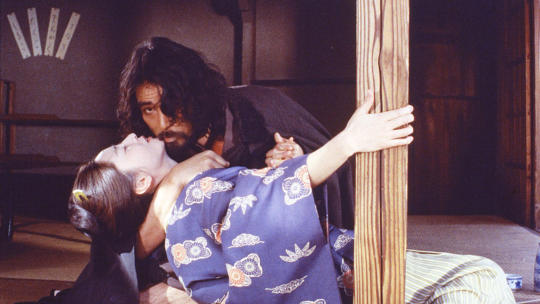
What we know for sure, is that Zigeunerweisen is the title of a vinyl record that Nakasago and Aochi used to listen. It has some gypsy tunes on it. Somehow, the record is used as the spiritual connection between Nakasago who dies and the outer world. Also, there are some references making to think Suzuki paints some ties with the political situation in Japan in the 1930s. The blind kids might symbolize of Japanese right forces getting insane prior to invading Manchuria (though, it is too obvious for Suzuki to be entirely sure that was an original intention). There is also a connection between the fact that Aochi is a German language professor, the relations of Japan and Germany and the title of record taken from German - Zigeunerweisen. And once again, this is just a guess as it never becomes clear what the author implied.
Suzuki uses Aochi as a sort of symbol of his audience: a confused man is trying to follow the story and understands very little from his friend’s behaviour. The ending is bizarre just like the whole movie, and we are left with no answers, as well as Aochi. However, giving the answers is not something the film has been made for. This is entirely visual work, and it is drastically important to pay attention to the shot, mise-en-scène, camera work and usage of light. Zigeunerweisen is a visually appealing film, and many shots are just like gorgeous paintings we enjoy. The matter of greatest importance for Suzuki was to fully realize and utilize his potential in elaborating the exquisite ways of artistic impressions. Making Zigeunerweisen, he made up his mind for creating a fresh visual language. He comes up with the material which is confusing, but it goes without a doubt Zigeunerweisen can be hardly compared to anything else. Watching Zigeunerweisen, at some point you realize there is probably no way to twig what is real and what is just irony, mockery, dream or fantasy. Nevertheless, the visual style is so solid and brilliant that it starts seeming the only way to accompany the frantic twists of the plot which remain spooky and incognizable just like the vinyl record or tunnel we see several times in Zigeunerweisen.

Kagero-Za (陽炎座) - 1981
The second film of Taisho Trilogy clarifies several points I remained dubious about after watching Zigeunerweisen and Yumeji. This trilogy is an example of substantially visual cinema where the logic and storyline are abandoned, in order to prioritize the importance of the mood and shocking stylistic beauty of the shots. Seijun Suzuki used to say “I make movies which make no sense and no money”, and this is true. Watching Zigeunerweisen, I was struggling to understand where do the twists of plot and expression lead and what is the idea behind it. Kagero-za or Heat-Hazed Theatre makes it transparent there was apparently something Suzuki implied, but it would remain incognizable as there are numerous ways to interpret the tale.
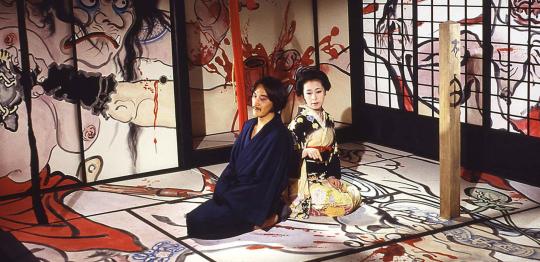
Kagero-Za is another psychological surrealistic tale in this trilogy. The plot is a formality as it never gets too clear. We follow the story of playwright Matsuzaki (portrayed by Yusaku Matsuda) who encounters his different mistresses, one of whom appears to be the wife of rich businessman Tamawaki (Katsuo Nakamura) who wants protagonist dead. Heroes pass away and appear again. In Zigeunerweisen I was still wondering what that supposed to mean, but with Kagero-Za I realized these are the actual fantasy ghosts who might bear symbolic meaning. The protagonists talk in one location, and in the next shot show up somewhere else. They jump from topic to topic, the dialogues are bizarre making both conversations and plot incoherent - though, this is something Suzuki has been trying to achieve.

Kagero-Za resembles a deranged dream or plot of a kabuki play. At some point, we actually see the events might be nothing but the new play of Matsuzaki who is seeking for the new story. We see awkward scenes on the theatre stage, and playwright observes them too. Perhaps, the whole story is like that - just a fantasy of Matsuzaki told in a surrealistic way.

What is Suzuki brilliant in is coming up with the fresh ideas of his shots. Dozens of shots require studying and might be considered art objects. The usage of vivid traditional paintings Suzuki employs is striking and spectacular, making the film’s visuality pretty impressive. Camera work and montage also follow the lead of Suzuki’s bizarre visual code. Again and again, Suzuki creates mise-en-scene of stunning beauty. The scenes and shots are often not linked to each other with any sort of explanation, but they are perfect with no respect to the story. Kagero-Za is not a film of non-linear plot and not a non-plot film either. It is an attempt to reject any sort of dictate created by traditional view on the films and necessity of coherent plot and background. Highly experimental and visually appealing work of Suzuki is meant to make neither sense nor money. But the aesthetics of Suzuki should be acclaimed as something rare and remarkable. This aesthetic will lead him to the third and last film of the trilogy Yumeji which I regard as the best part of Suzuki’s surrealistic Taisho films.

Yumeji (夢二) - 1991
The last film of Taisho trilogy in a very surrealistic tone tells a story of Japanese painter and poet Takahisa Yumeji (1884-1934) encountering several mistresses and his rival artist Gyoshu Inomura who is arguably more talented than Yumeji (portrayed by Kenji Savada). Throughout the account on the screen, we get a glance on the psychological and art struggles of the painter who is seeking the perfection and inspiration for his paintings.

The tantalizing tale is enhanced with numerous surrealistic forms, characters, images and entire scenes. It is also impossible to follow the stream of the tale before we get an idea we bump into the artistic fantasies of Yumeji, and the line between the death-life and reality-fiction is painted by Yumeji himself. The bizarre work of camera moving from the left to the right, and back again and showing the scenes with unusual composition and angles illustrate this far-fetched definition of different dimensions which unite and mix up in Yumeji’s mind. The story contains both surrealistic scenes and detective-like motif, though It is not entirely clear whether Wakiya (played by Yoshio Harada) has been actually murdered or not, and it is unclear if the whole story ever took place in the reality. The endless riddles bridge the gap between Suzuki and Buñuel with Robbe-Grillet.

What is certain is that the film tells about Yumeji’s perception of the art and women which are pretty much related in his life. There is no mood for art without passion Yumeji chases women with. He encounters the most beautiful ladies and seduces them, but he doesn’t love them in a human way. His fetish is about their postures, outfits, behavoiur is utilized for the ideas of paintings, and the women’s beauty for him is nothing but inspiration for art and poetry. He feeds himself on their boundless sexuality and allure like a vampire, and he is so addicted to their beauty that women, in fact, define his art. We see Yumeji is in the relationships with a woman who loves him, but the artistical mindset makes him seduce the other women as potential models or nudies.

Seijun Suzuki shows the gorgeous women and their perfect bodies in abundance to immerse himself and viewers in Yumeji’s fetish (and probably the director’s fetishism as well). The scenes with Tomoyo (played by Tomoko Mariya) and Hikono (Masumi Miyazaki) are charged with the enthralling sexuality the female protagonists radiate. They are frequently shot as the paintings, and this images strike with the boundless beauty Yumeji and the viewers fully immerse into. This is a very sexy and surreal fantasy which resembles Alain Robbe-Grillet’s L'Eden et après in an artistic way and Trans-Europ Express by the manner of storytelling. The usage of aggressive montage and dense colours reminds of the style of La Chinoise by Jean-Luc Godard.
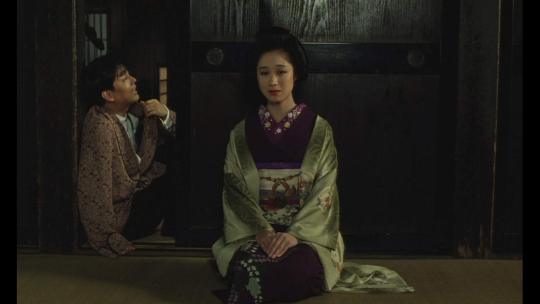
To sum up, Yumeji is a set of fetish fantasies made like a collection of his paintings he could have possibly completed. Every shot is like a painting where mise-en-scene stuns with beauty and bizarre mesmerizing power. The story is hard to follow and riddles might be very confusing, but it can be interpreted in many ways. Yumeji is important and striking as an art object and surrealistic experiment, yet there is probably no way to delve too deep into the film: it is much better to enjoy the sophisticated shots and the beauty of Yumeji’s mistresses portrayed by Tomoko Mariya, Masumi Miyazaki, and Reona Hirota. The last but not the least thing is the usage of music. This is the film Shigeru Umebayashi has written his brilliant and sublime music theme Yumeji for. Later the same theme would find international acclaim after being remarkably used in the film of Wong Kar-wai In the Mood for Love.
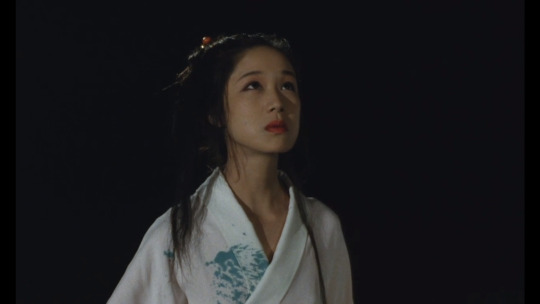
#yumeji#seijun suzuki#鈴木 清順#takehisa yumeji#tomoko mariya#masumi miyazaki#Kenji Savada#kagero-za#zigeunerweisen#taisho trilogy
23 notes
·
View notes
Photo

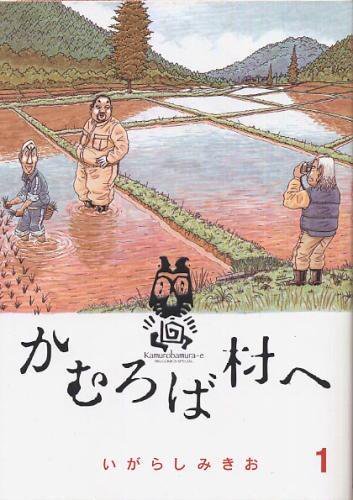

A Farewell to Jinu / Jinu yo saraba Kamuroba mura e (2015)
Ryuhei Matsuda as Takeharu Takami
Sadao Abe as Yosaburo Amano
Takako Matsu as Akiko Amano
Fumi Nikaido as Aoba
Toshiyuki Nishida as Nakanussan
Hairi Katagiri as Isoko
Yuko Nakamura as Natsu
Seminosuke Murasugi as Ikichi
Shima Ise as Toki
Shuji Okui as Katsuo
Morooka Moro as Miyontsuan
YosiYosi Arakawa as Aoki
Sarutoki Minagawa as Aoto
Suzuki Matsuo as Tajimi
Former bank clerk Takeharu thought he was strange when he moved to a remote village in Japan's northeastern Tohoku region after developing an inexplicable "money allergy." However as he attempts to live a peaceful rural life without currency, Kamuroba village's bizarre characters draw him out of his shell in this increasingly surreal madcap comedy. Then a nearby town leader attempts to overthrow the handyman bus driver mayor, Takeharu must prove his attachment to Kamuroba and its people.
youtube
2 notes
·
View notes
Text
hc; rantaro 4
Season 52
(note: subject to change if we do in fact get a game based on this season)
Season 52′s contestants were, of course, fourteen high-schoolers, plus the current Mastermind of the writing staff (Tsumugi Shirogane, a writer since Season 43 and mastermind since Season 49) and the usual Audience Proxy, an in-universe Ultimate Robot named M1-R41 (aka Mirai). This, however, was Mirai’s last season, as the memory-wiping software they used on her AI began to degrade, and she began to retain some her memories of the real world in-between seasons. The next season they introduced a new proxy, K1-B0.
Rantaro Amami was the Ultimate Adventurer, of course, and he was joined by thirteen others:
Koharu Himura - Ultimate Mangaka
Sachiko Ise - Ultimate Journalist
Ami Nakahara - Ultimate Flautist
Akio Miyama - Ultimate SFX Artist
Hibiki Matsuda - Ultimate Announcer
Izumi Fujioka - Ultimate Kickboxer
Mai Hayashi - Ultimate Linguist
Katsuo Honda - Ultimate Surgeon
Ryoichi Maeda - Ultimate Pilot
Chiyoko Ito - Ultimate Baker
Minato Tachibana - Ultimate Stuntman
Sora Yamazaki - Ultimate Zoologist
Emi Morimoto - Ultimate Secretary
During the cases, Rantaro and Sora were the main investigators, doing most of the legwork and teaming up to lead the trials. Emi's secretarial skills proved a valuable asset, with her keeping track of evidence and helping point out flaws in others’ arguments. Minato was the season’s Troublemaker/Rival type character, a daredevil who said a lot of outrageous things to cause reactions and enjoyed the thrill of the killing game despite being a decent person otherwise.
In the first ‘chapter’ of the season, Ami murdered Sachiko. She did this out of a blind panic, afraid of the killing game, and lashed out when Sachiko tried to comfort her. She very nearly framed Emi for it due to the secretary’s poor timing, but Emi was exonerated. Her execution involved water coming out of a giant flute.
In the second ‘chapter’, Hibiki murdered Akio. He did this out of fear of the other boy’s talent, SFX artist, thinking that Akio would be able to kill someone and escape with ease thanks to that. Therefore, he panicked and killed him. His execution involved a giant megaphone.
In the third ‘chapter’, Katsuo -- thanks to the third motive, a variant of the Despair Disease -- went mad and murdered both Izumi and Mai. Izumi was killed a day before Mai, but both bodies were discovered at the same time. The surgeon had completely lost it, and had gone full mad scientist, and his execution was set up like an autopsy.
In the fourth ‘chapter’, Chiyoko murdered Ryoichi. She found part of the backstory that caused her to freak out, and mistakenly believed Minato was involved due to his off-the-wall personality and habit of saying crazy things, but her attempt to kill Minato backfired, and Ryoichi was killed instead. She apologized, but was voted and executed. Her execution involved a giant oven.
In the fifth ‘chapter’, there was no murder, with the remaining seven contestants trying to stop the game itself. They failed thanks to the Monokubs and the Exisals, and in the flight away from them, both Minato and Mirai were killed protecting the others.
The sixth final ‘chapter’ was the usual plot reveal investigation, and the final five did so -- in the end, Tsumugi was unmasked as the mastermind, and the trial went as usual. To save Sora and Emi, Rantaro and Koharu -- who had survived on sheer will and belief in hope and her friends -- sacrificed themselves for ‘hope’, making Sora and Emi the two finalists.
Rantaro kept in touch with most of the others after the season ended, but his friendships with Sora, Emi, and Koharu stuck, especially since they had worked so closely together and since he had taken the Ultimate Survivor role after Koharu had been too shaken and traumatized to play again. After his death in Season 53, he texted all three of them to let them know he was out again, and they were the first people outside of Season 53 he recruited for his lawsuit.
0 notes
Note
I know nothing about your OCs please tell me who they are
Okay WELL I appreciate the vagueness but I have so many at the forefront of my mind so 🤔
I could always tell you about my Shining Star University 7/DR7. Basically just seven Danganronpa OCs whom I also plan to use in a few chapters of the Gravity Falls fic I'm writing.
Ryuji Saeki: The Ultimate Otamatone Player. My special goofy boy who's just an absolute ray of sunshine, although he isn't quite as bright when it comes to thinking. But he means well and has a big heart! He's also very good at rhythm games!
Honoka Saeki: The Ultimate Alternative Singer. Ryuji's twin sister, and a lot more reserved and quiet than her brother. A girl of few words until you put a microphone in her hands and let her sing her heart out onstage. She's also a fan of tourist trap type shops (she has a taxidermied possum named Fluffy that she got from one), gothic lolita fashion, and she's pretty good at identifying mushrooms.
Katsuo Matsuda: The Ultimate Tennis Player Robotics Engineer. Was originally entered into school as a tennis player via his mother, but he knows she only did it because all the women in their family were professional tennis players. And, uh, given how he's a trans boy...we can put two and two together. Anyway, he's treading his own path and pursuing his own dreams. Outside of that, he's a fan of scary movies and will infodump at a moment's notice. ALSO his name translates out to 'victory, hero, manly'. Good for him.
Ava Tarnbull: The Ultimate Baker. She's a sweetie who was born on Valentine's Day, but due to that and not having many friends in her childhood, she chooses to give other people gifts on this day instead of asking for them in return. Usually her gifts are baked goods she made herself, and all of them are free of any fondant because she refuses to touch the stuff and thinks it's nasty uwu She also loves puppets and cooking shows, especially ones focused on bad cooks. Also clearly only half-Japanese; her other half being Scottish.
Mio Hatanaka: The Ultimate Ballerina. Very shy and meek, and prefers to let her dancing do the talking for her. Which it often does; she's the best ballerina in the country and beloved by so many. But despite her nerves off the stage, she's very kindhearted and will warm up to people if they talk to her long enough. She loves cute things like plushies and tiny dollhouse furniture, and also pretty girls who bake (heehee).
Hitomi Yoshihara: The Ultimate Surgeon. The Girlie of all time. She was raised in a 2-bit circus and did surgery on the performers when they got hurt. She's aroace. She can juggle. She wants to study the anatomy of a paranormal or supernatural being, specifically by getting one of their limbs. She is a Bill Cipher fangirl for this reason in her GF-verse (once again, not in a romantic sense. She just wants to put him in her handbag and steal his arm, #girlthings). She's such a silly and a little scary, but she takes her job and the lives of her patients very seriously.
Ishida Amano: The Ultimate Extreme Sportsman. If there was ever someone who could toe the line between extreme stunts and extreme safety, it's Ishida Amano. He will perform death-defying stunts on the regular, but will cancel any and all plans to do so if he doesn't have the specific safety equipment needed for the stunt. He will ride around school hallways on an electric scooter (one that stops on a dime), only to scold someone for running in the hallways. He's VERY intense and VERY extreme, but his heart is usually in the right place. He just wants to keep his friends safe, in a very Ishida way. Also my friends and I have a running joke with him slapping a helmet on every unprotected head he can find.
That's it, those are my darlings~! 🥺 I've been thinking about them for a year straight, and I love them SO much.
#Asks#Anonymous#DR7#My OCs#Ryuji Saeki#Honoka Saeki#Katsuo Matsuda#Ava Tarnbull#Mio Hatanaka#Hitomi Yoshihara#Ishida Amano
0 notes
Text
#Me with my DR7#I have SO MANY IDEAS; SO MANY TIDBITS OF INFORMATION ABOUT THEM #Did you know Hitomi's name meaning is 'pupil of the eye' or just 'pupil' or 'eye'? #...I absolutely did that as a bit of fun with how she ends up a Bill Cipher stan #Ryuji's name comes from the Persona character; I do not Persona but that boy is my SON #Ishida comes from the combination of his two inspirations' last names; Owada and Ishimaru #Katsuo literally picked his name because it means 'victory; hero; manly' #(He's transmasc if that explains it) #I don't think Honoka and Mio's names had any specific little easter eggs #I just like how they sounded #Ava...well her full name is a play on the word Avatar #Why? Spoilers #Ryuji loves rhythm games; especially ones like DDR or ones that require him to move his hands #Honoka's a fan of gimmicky mystery shops; and has a taxidermied possum in her room that she got from one #She's also fond of mushrooms (as evidenced by her skirt)#That might also have a significant role in her and her brother's backstory #Ishida has two dads and the very BIG personalities that came from them #He's all about extreme sports stunts but also safety is his number one concern #To the point where he tends to take it too far and WILL slam a helmet on your head if you look like you're doing something dangerous-#-without safety gear #His preferred mode of transportation is his trusty electric scooter #Katsuo got into his school as the Ultimate Tennis Player but he was only enlisted as that due to his mother #In actuality; his love and preferred career choice is in robotics #He's also quite fond of horror movies #Hitomi was raised as an orphan in a two-bit circus and developed her talents as a surgeon by stitching the performers-#-back together after dangerous stunts #It was there she also developed a love for anomalies and oddities (hence the Bill Cipher stanning) #I feel like I'm almost out of tags so I'll move this to a new post
Slamming all of this in one post and continuing it because I got a LOT more to say
Mio has severe social anxiety, but surprisingly no anxiety about performing in front of people. She prefers to let her dancing do the talking for her.
She also LOVES super cute things, like plushies and dollhouses. She knows they’re a bit juvenile but they’re just so CUTE
I also lied about her name; it means beautiful or cherry. She is very beautiful, but the cherry part is a reference to Sakura from DR1. She was initially going to be similar to her in personality, but I decided against it due to how the writing mishandled Sakura a lot.
Ava’s birthday is February 14th, and she usually gives out homemade baked goods to other people to celebrate the holiday, rather than the other way around.
She started doing this as a kid, because she had no friends and everyone would forget her birthday due to it falling on Valentine’s Day. So she took to trying to make other people happy by giving them gifts instead.
She also loves cooking/baking shows, and also has a deep loathing for fondant.
Circling back to Ryuji, but he has a whole collection of otamatones and they all have different names.
Between him and Honoka, she’s the oldest by a few minutes. This doesn’t matter much to her personally, but Ryuji always jumps to her defense whenever someone asks who the older twin is.
Also another fun fact about Katsuo’s name; the last name Matsuda comes from the Death Note character of the same name.
Ishida’s personality is very reminiscent of Mr. Poolcheck’s from Gravity Falls, in terms of intensity. He also happens to be my voiceclaim for Ishida.
In terms of orientations, the group is as follows:
-Ryuji: Bi
-Honoka: Aroace
-Mio: Lesbian
-Ava: Lesbian
-Katsuo: Gay
-Ishida: Gay
-Hitomi: Aroace
I love them all so SO much, and I’m so excited to write them in a story (I RP them already but I’m still excited!)
#Hayley Speaks#My OCs#Ryuji Saeki#Honoka Saeki#Ava Tarnbull#Katsuo Matsuda#Ishida Amano#Hitomi Yoshihara#Mio Hatanaka
0 notes
Text
Thinking about my DR boy Katsuo Matsuda, who was entered into a school as the Ultimate Tennis Player by his awful mother, but switched to being the Ultimate Robotics Engineer. Thinking about how while he does program robots for things like underground robot rumbles and the like, he would never make one that developed any form of sentience and expressed a desire to stop competing compete because ‘no one should be forced to live a life that someone else controls for them.’
#Hayley Speaks#Also he's trans if that tells you anything#He might not be a trans robot but he's trans and works with them/respects them#And if that's not totally telling of me as a person#ANYWAY I love him#And I'm totally not just thinking of him as a means of taking my mind off this shitty ass chapter 2 of DR1
0 notes
Text
(Gonna put all the links for the bios of my DR7 in one post for easy access:
Katsuo Matsuda
Ryuji Saeki
Honoka Saeki
Hitomi Yoshihara
Ava Tarnbull
Ishida Amano
Mio Hatanaka
)
#Mun Speaks#Katsuocore#Ryujicore#Honokacore#Hitomicore#Avacore#Ishidacore#Miocore#Super Mega Hopeless Murder High School of Hopelessness 7#DR7#(Anyway they’re all open for rp if anyone wants them~!)
0 notes
Text
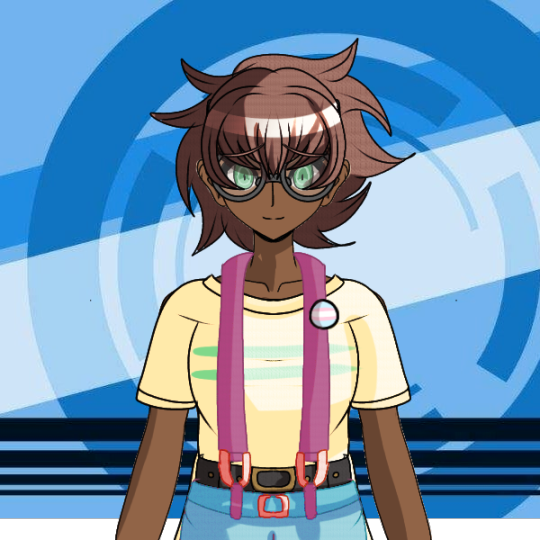
Not a perfect rendition of him, but have a Katsuo Matsuda, the Ultimate Tennis Player Robotics Engineer
7 notes
·
View notes